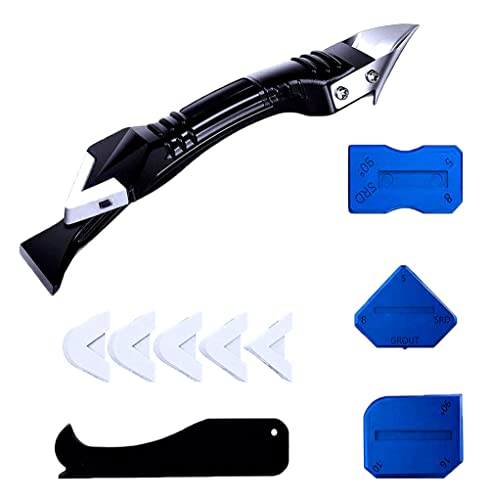Have you ever noticed a large gap between your wall and your bathtub or scanned through your interior's wall and felt something is different with these existing gaps? We've thoroughly researched this situation to give you a solution to this current gap problem.
Use caulk to fill the gap that is larger than 1/8 inch long between your bathtub and wall. Follow these eight easy steps on how to fill in gaps using a caulk:
- Clean out any existing caulk in the gap using a sharp object
- Choose a tub and tile caulk or sand caulk
- Open the caulk using a razor blade or knife
- Place your caulk on the caulk gun
- Apply the caulk to the gap between your bathtub and wall
- Smoothen the caulk using your finger or tissue
- Let the caulk dry
- Re-apply the caulk if needed
Caulking isn't a hard thing to do, you just have to be careful if you don't want it to go beyond your target gap. Keep reading this post as we show you the proper ways of caulking and some knowledge about caulk that you have to keep in mind.
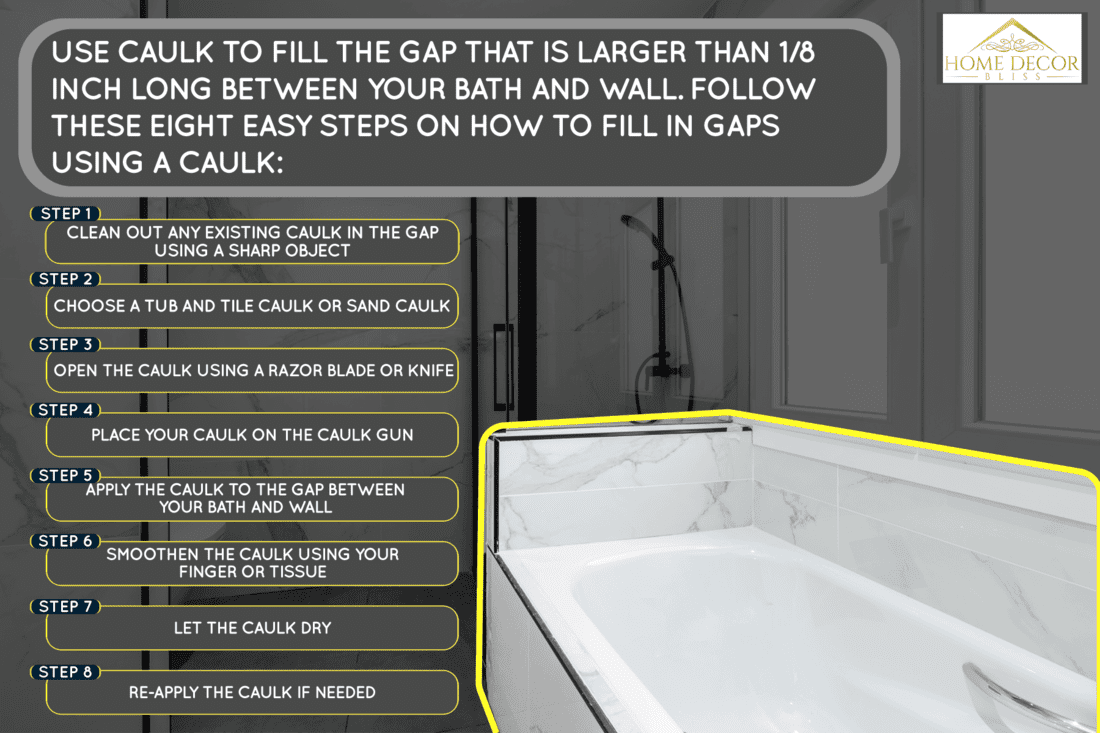
How To Fill Large Gap Between Bath And Wall
Caulk is a durable solution to any damage in your house, such as gaps in your wall or tile, or even seams in your woodwork. To fill the large gaps in your house, follow these steps:
We sometimes add affiliate links and content that was curated and created by our team with the help of advanced ai tools to help showcase the best design styles.
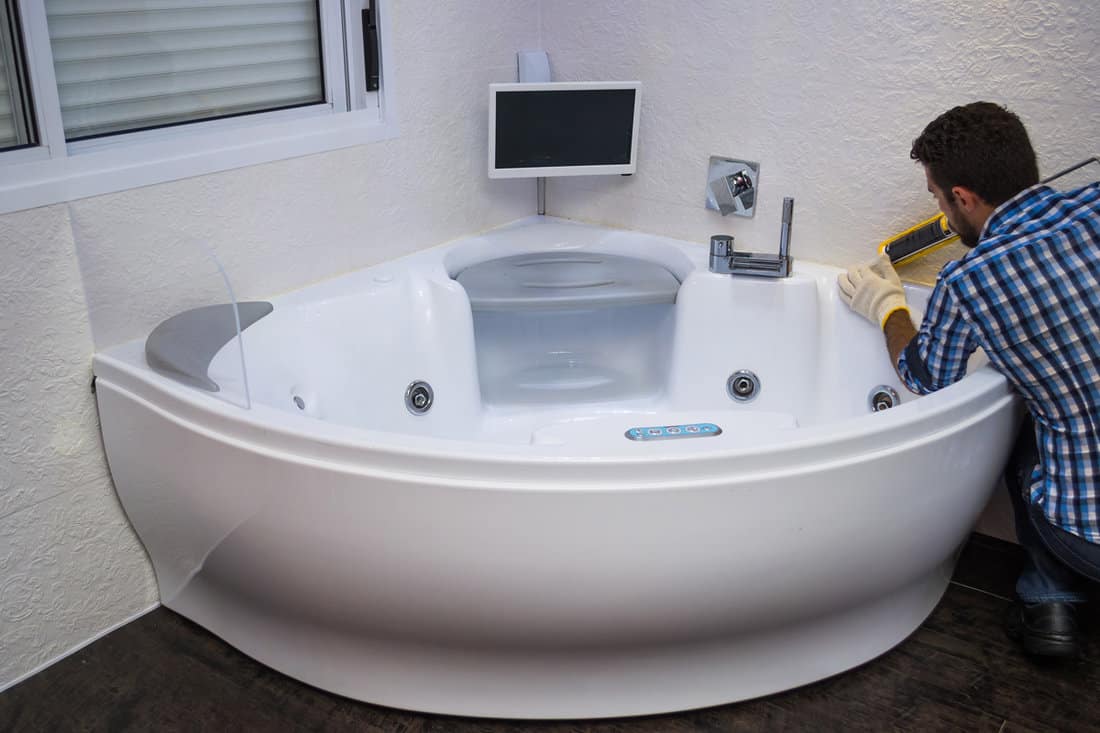
Clean Out Any Existing Caulk In The Gap Using A Sharp Object
![]()
Using a utility or putty knife, you can cut through the caulk and pull it off. It might be best to use a flat-head screwdriver for numerous caulk layers. Additionally, there are specialist caulk removal instruments made to remove it in an orderly manner.
Always keep in mind to take extra care not to dig too deeply and damage your wall surface. Moreover, when utilizing sharp instruments, always take extra safety measures. Take it easy, wear safety gear, and be careful!
Clean the area completely to remove the caulk residue. To kill fungus on most surfaces, scrub the area with a cloth moistened with bleach or another harmless cleaner.
Cleaning with mild chemicals like denatured alcohol might be necessary for surfaces that are more vulnerable to damage. Before starting to apply your tub and tile caulk, allow surfaces to dry thoroughly.
Choose A Tub And Tile Caulk Or Sand Caulk
When you are buying a caulk, make sure that you choose a caulk that's suitable for your bath and wall. Make sure to check the label of the caulk you are choosing. Usually, you'll see keywords in its label such as "bath, kitchen, wall, and tile."
Check out this Gorilla Sealant Caulk on Amazon.
Open The Caulk Using A Razor Blade Or Knife
When opening the caulk tube, you must first cut the tip of the caulk to allow the sealant to flow out. At 45 degree angle, cut the tip of the caulk using a razor blade or utility knife. Thoroughly insert the razor blade into the hole until you hear the seal pop.
Check out this 3-in-1 Caulk Opener on Amazon.
See it in action here:
Place Your Caulk On The Caulk Gun For Easier Application
If you're using a caulk gun with a trigger. On the caulking gun's back, pull the release trigger. The caulking gun has a tiny trigger on the back. Use your thumb to press this.
By doing this, the extensive metal rod that passes through the entire frame will be loosened. You have to pull the metal rod backward.
After this, insert the caulk tube inside the hole while still holding the metal rod. When the caulk is properly leveled to the caulk gun, release the metal rod to hold the caulk tube.
Click here to see this Caulking Gun With Trigger on Amazon.
See it in action here:
Apply The Caulk To The Gap Between Your Bathtub And Wall

The caulking gun should be held 45 degrees away from the surface. As a result, the gun will be equally positioned from both sides of the gap where the caulk will be applied.
Make sure that you point the tip of the caulk tube to the gap where you will be sealed in. Apply the caulk by gently pulling pressure on the gun. The large gap should be neatly covered by the caulk gun.
Smoothen The Caulk Using Your Finger Or Tissue
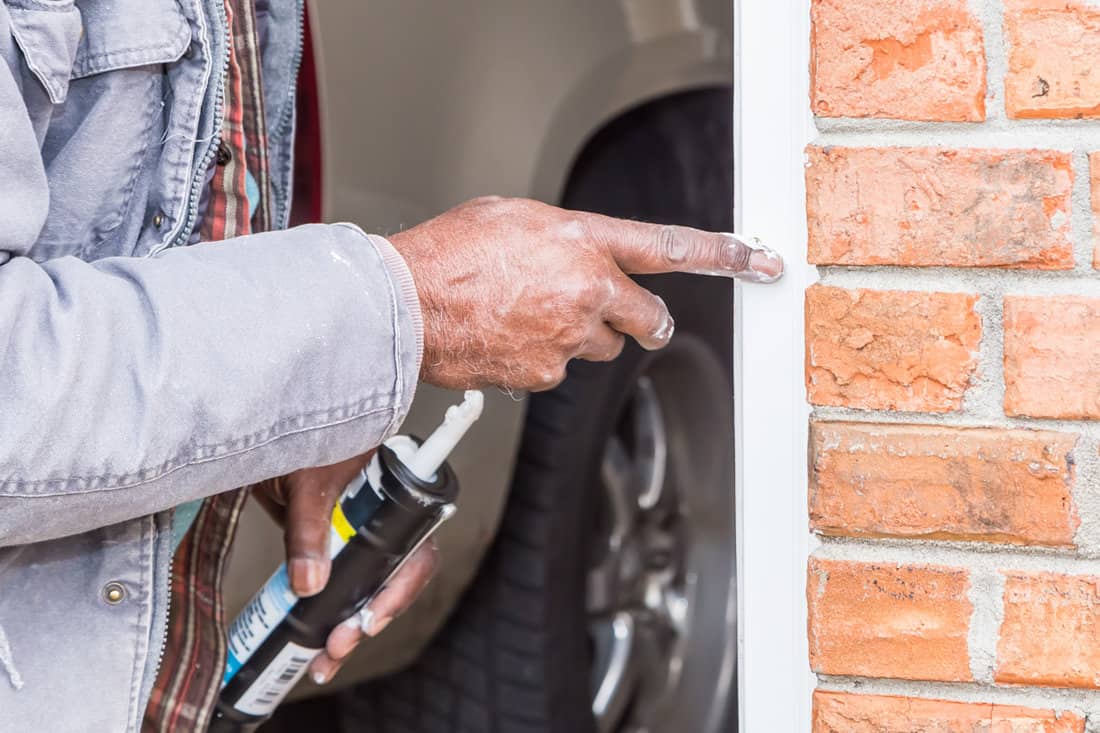
If you're using silicone caulk, wet your finger with denatured alcohol. On the other hand, if you're using latex caulk, just wet your finger with water.
As you smooth, the gap, the water, or the denatured alcohol will act as lube and a thinning agent. Use your finger to gently press it into the gap as you slowly push it throughout the caulk in a single and straight line.
Let the caulk dry
After you filled the entire gap between your bath and wall, let the caulk sit for about 24 hours to fully cure.
Re-apply the caulk if needed
Once the caulk has been thoroughly dried, you will notice some part in the gap that hasn't been covered yet, just re-apply the caulk on the part where it is needed.
Different Types Of Caulks
Acrylic latex caulk, silicone sealant, polyurethane foam, and specialized caulk like butyl-rubber caulk are just a few of the caulk and sealants you can use inside and outside your house.
Acrylic-Latex Caulk
Regular and specialized acrylic-latex caulk are frequently used in the plumbing industry for securing loose tiles. Acrylic latex is good for filling and sealing breaches and cracks in toilets, sinks, showers, bathtubs, molding, trim, baseboards, and corner joints.
The simplest caulks to apply and smooth out are those made of acrylic latex. They are the only sealants that can be cleaned with water as well. Acrylic latex is enhanced in stickiness and flexibility by adding silicone; look for varieties marked as siliconized.
Check out this Acrylic Latex Caulk on Amazon.
Silicone Sealant
Due to its ability to establish a water-resistant seal that keeps a firm grip despite adverse weather conditions, silicone sealants are frequently used to seal windows to frames.
The same factors also explain why silicone sealer is widely utilized in the automotive, appliance, and electronic device industries to seal cables and sensors.
Click to see this Gorilla Silicone Sealant on Amazon.
Polyurethane Foam
One of the best polymers for several uses is polyurethane. In addition, it is being utilized for coatings, and also used in packaging, clothing, appliances, cars, construction, composite wood, electronics, flooring, and furniture.
Polyurethane is good for sealing, filling gaps, preventing water and air from getting into joints, absorbing the natural movements of building components, and improving aesthetics.
Butyl-Rubber Caulk
A quality filling material called butyl rubber caulk is perfect for sealing external gutters, vinyl siding, flashing, roof vents, corrugated roofing, aluminum, pipelines, and drain spouts. Aside from that, it also gives outdoor areas that are exposed to the weather an insulated and watertight seal.
Are All Caulks The Same?
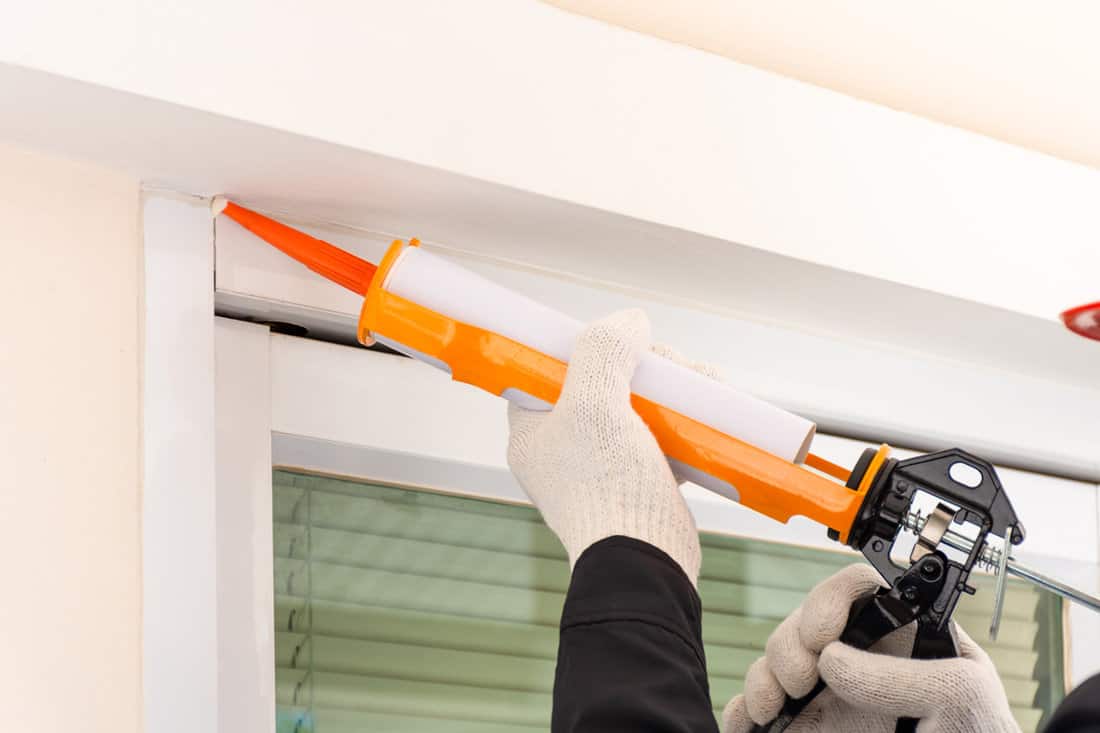
If you need to use a colored caulk or one that can be painted to match, or if the area you are caulking is not exposed to water, you should use acrylic latex caulk.
Acrylic caulk fills in any gaps between walls, ceilings, and woodwork trim, making it ideal for painting applications.
On the other hand, the silicone caulk maintains its flexibility for the majority of its lifespan without peeling, breaking, or distorting.
Because of this, it often costs more money and will maintain a waterproof barrier against moisture far longer than acrylic caulking.
Can Caulk Be Used Without A Caulk Gun?
Caulk can be applied without a gun. However, compared to caulking with a gun, this takes a lot more time and attention. A caulking gun provides consistent pressure to the tube to produce a finish that is smoother and more uniform.
See it in action here:
How Thick Can You Apply Silicone Caulk?
The gap that needs to be filled should be measured in size. Caulk can be used to cover gaps up to 1/4 inch wide with one bead. A bead of caulk should be applied to the gap if it is somewhat larger than this but it should not level with the surface.
How Do You Caulk A Deep Gap?
Regular caulk should be used to seal gaps that are less than 1/8 inch wide; sanded caulk should be used to seal gaps that are wider than this. Make sure the opening is clear and dry before applying a thin, even bead of caulk.
What Is The Best Caulk To Use Around A Bathtub?
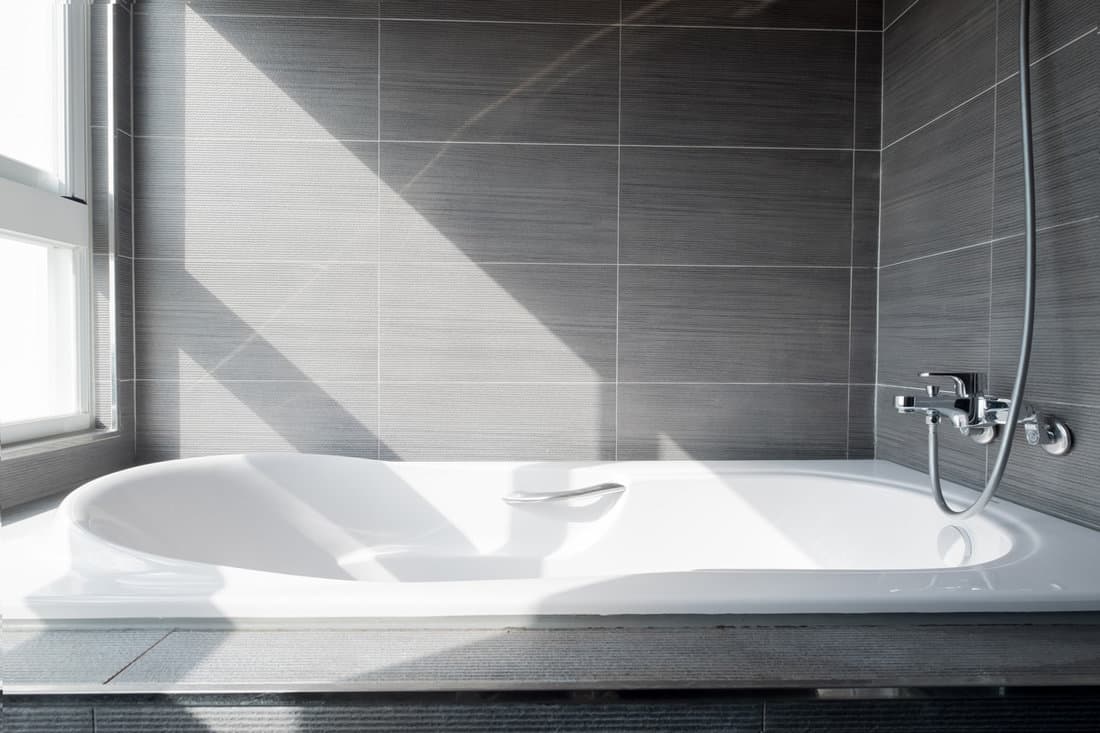
The two greatest materials to use for caulking a bathtub are silicone and latex. Slick, non-porous surfaces like glass, ceramic tile, and metal are ideal for silicone adhesion. For surfaces like stone tiles or wood trim around the tub base that are uneven, porous, or out of place, latex is preferable.
In Closing
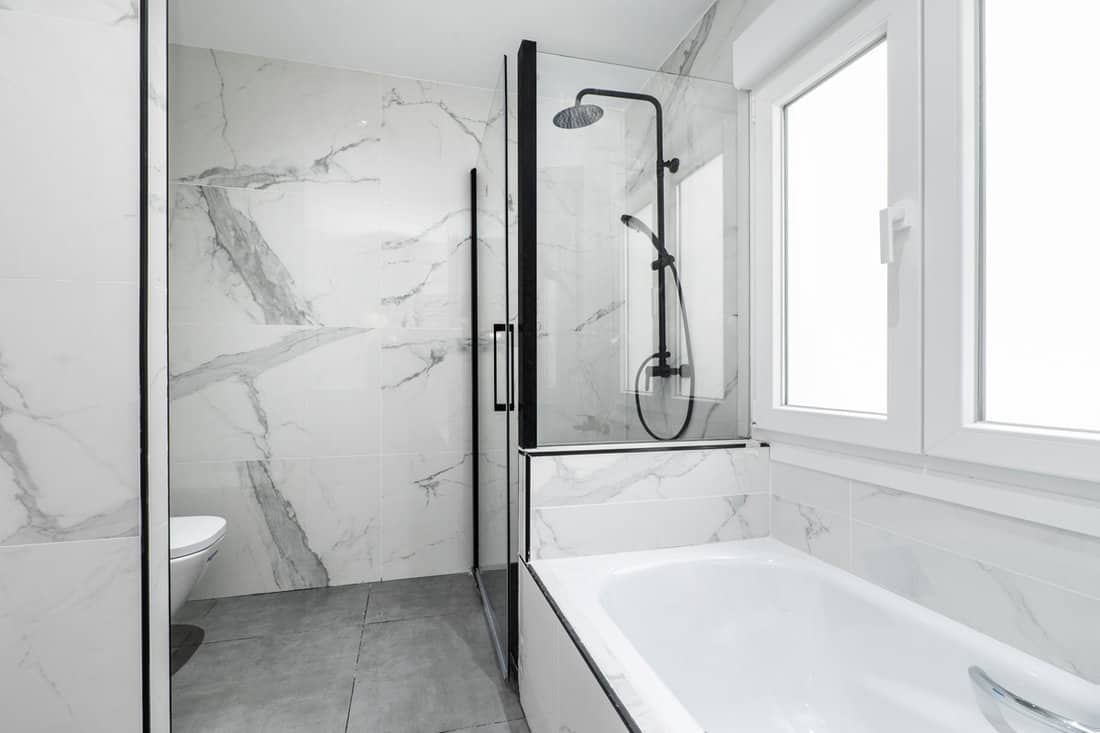
When filling gaps, caulk is the best solution. Remember that caulks vary in different aspects, so you better watch out and check the label of your caulk before applying it to the surface of your wall.
Also, we recommend that you consult first with the expert to guide on the things that you should keep in mind when caulking.
Before you leave, check out these related posts:
Should You Caulk Between Floor And Baseboard?
How To Caulk Baseboards To Floor [Steps Explained]


